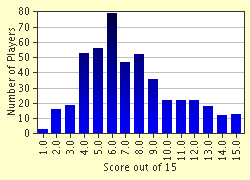Quiz Answer Key and Fun Facts
1. The Scottish Wars of Independence began when John, King of Scots renounced the fealty he had sworn to which English king?
2. Which town was sacked by the English army in 1296 as a warning to the rest of Scotland of the price of resistance?
3. Who became the first English viceroy of Scotland in 1296?
4. Most of the Scottish higher nobility had submitted to English rule in 1296 following King John's enforced abdication. Resistance, therefore, initially fell to members of the lower nobility. The most famous of these was William Wallace who lead resistance in southern Scotland. However, who lead resistance in northern Scotland?
5. Who was made sole Guardian of Scotland in 1298?
6. At which battle in 1298 was William Wallace defeated by the English?
7. Who betrayed William Wallace to the English in 1305?
8. In which year was Robert Bruce crowned King of Scots, ending the Second Interregnum?
9. Following his coronation, King Robert was defeated by the English and almost captured. He was forced into hiding and may even have fled to Ireland. However, he returned the following year and won his first victory at which battle?
10. Which member of King Robert's family was not killed during the Wars of Independence?
11. Which battle during the Wars of Independence was the only one in which King Robert of Scotland and King Edward II of England were both present on the battlefield?
12. In 1320 the Scottish nobility and clergy wrote a letter to the Pope declaring their rejection of English overlordship and their support for King Robert. To which pope was this declaration addressed?
13. Which treaty in 1328 brought the First War of Independence to a close?
14. To which country were the Scottish King David II, his wife and sisters taken for safety in 1334, following renewed troubles with the English?
15. At which battle near Berwick in 1333 were the Scots heavily defeated by the English?
Source: Author
alan03
This quiz was reviewed by FunTrivia editor
bloomsby before going online.
Any errors found in FunTrivia content are routinely corrected through our feedback system.


